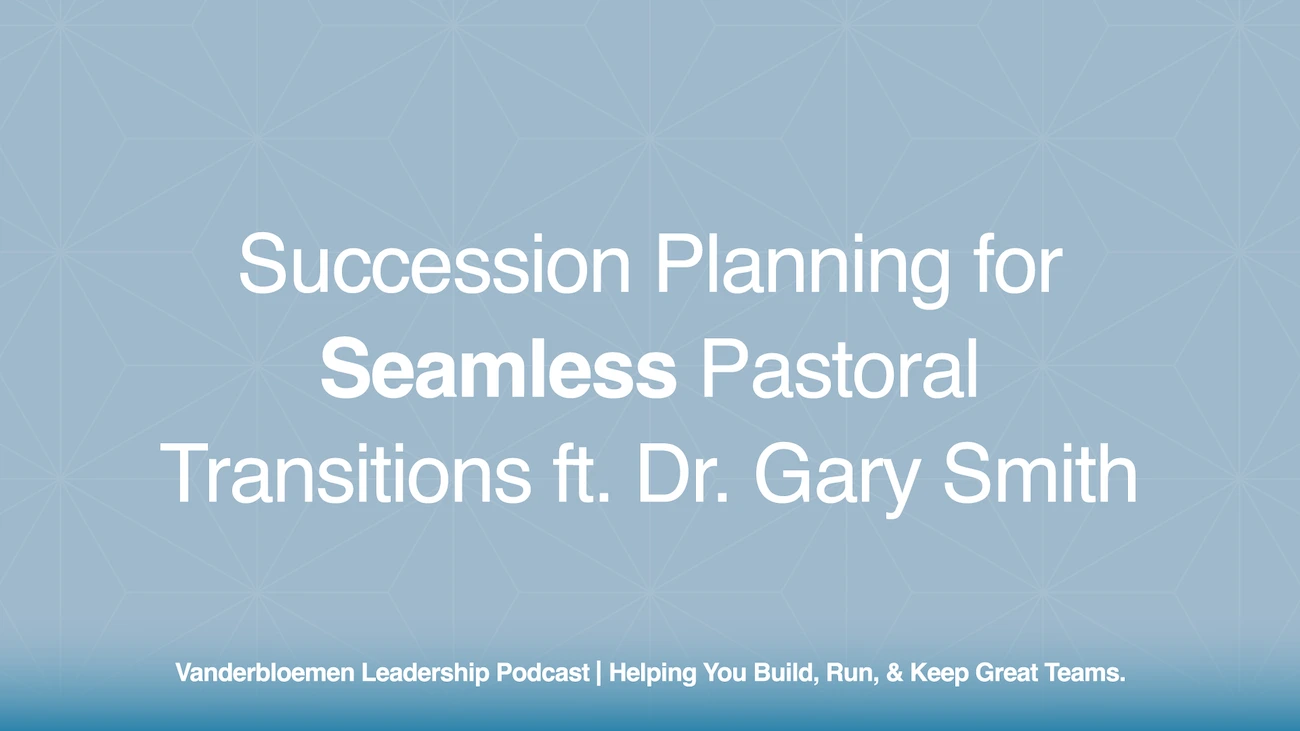One of the questions I will regularly ask candidates during an interview is this: Describe a time when you had to have a difficult conversation with someone on your team. What was the issue? How did you address it? What happened as a result?
The ability to have a hard conversation with a staff member or volunteer is a skill that every leader needs to develop. When handled poorly, it can create distance, damage personal relationships, de-motivate the team, and decrease productivity and impact. When handled well, it can become a catalyst for growth for both the individual and the team.
Unfortunately, very few leaders learn how to develop this valuable skill except through trial and error. As a result, many leaders feel a lot of anxiety about having tough conversations. We put it off hoping the issue will go away, or when we finally hit our limit, we address it with an angry outburst or passive aggressive comment that ends up doing more harm than good.
How can we deliver feedback that will be heard and result in positive growth? Here are six tried-and-true steps to having a tough conversation.
1. Determine the real issue.
Before initiating any conversation, take some time to determine exactly what the issue is that needs to be addressed. What specific behavior or activity needs to change? What specific examples can you give? Is this a personality conflict (which is going to be very hard to change) or is it a correctable problem?
Pray through the issue and ask that God give you clarity, wisdom, and grace. Be sure you have processed our own feelings about the issue. Can you be objective and open? If you are angry or frustrated, are you able to set those feelings aside so that you can have a constructive conversation? You never have to have this conversation in the heat of the moment, take some time to cool down and gather your thoughts.
2. Remember that holding someone accountable is done out of love.
We have these tough conversations because we care and want to give the other person the opportunity to improve or change the behavior. It’s a coaching opportunity, and it gets easier with time.
It’s also much easier if you’ve already built up a rapport. That’s why weekly or bi-weekly one-on-ones are crucial. You already know the person sitting next to you, and have hopefully built a safe space where constructive feedback is welcome.
3. Create a safe environment for the conversation.
Think through where and when you will have this conversation. Plan ahead. Where will the conversation take place? In an office, conference room, café etc? You will want to create an environment that allows you to be perceived as an ally and partner rather than an adversary.
Some simple tips that can be helpful:
- Don’t sit behind a desk or a table. Sitting behind a desk only creates an unnecessary barrier.
- Don’t have the conversation on the fly or standing in a hallway. If you aren’t prepared to have the conversation, it’s likely that they won’t be prepared to hear your concerns without being defensive. Minimize any chances of others overhearing the conversation or interrupting you.
- Don’t address the issue in a group setting.
- Come with bulleted notes of what you want to address.
- If this is especially sensitive and needs to be documented, be sure to have someone else in the meeting as an objective third-party.
4. Be specific & objective.
Start by setting the stage with a specific example of what you want to talk about. For example: “When we were in staff meeting the other day, I noticed that you didn’t participate in the discussion about ______.” Or “You missed three of our last four scheduled meetings.”
Be objective. Simply describe the behavior or issue in objective terms. Avoid subjective or universal language, such as “You didn’t seem engaged” or “You always arrive late.” Be careful not to assigning intent to the behavior.
5. Describe how the behavior impacted you, others, or the mission.
Once you have described the problem or issue, now it’s time to talk about how that behavior has impacted you or the organization. Try to phrase the feedback as, “I feel ____ when you ____.” This helps to not put the blame on the other person yet still hold them accountable.
“We really value everyone’s input, and I feel concerned when you don’t participate in the conversation.” Or, “I felt really stressed when you didn’t arrive on time for the event.”
5. Ask an open-ended question that invites their feedback & participation in the solution.
This is perhaps the most important step in having a successful difficult conversation. A lot of us can deliver the bad news, but only the best of us will ask for a response and invite the other person to help solve the problem. “Does what I am saying make sense to you? Can you help me understand what was going on with you during that meeting?” Or, “What are some things you can do to address this issue? How can I help you?”
This is the crucial step that can turn a difficult conversation into something that catalyzes growth and change.
6. Set a time to revisit the conversation.
Once you have had that initial hard conversation and have agreed on some of the changes that need to be made to address the problem, set up a time in the next few weeks to revisit the conversation. If there have been noticeable changes, give specific affirmation of those changes. If changes have not been made, revisit the changes in behavior that you had discussed in your previous conversation and explore what worked and what didn’t.
Leaders of healthy organizations view hard conversations not as a necessary evil but as a welcomed catalyst for growth.
What other pointers do you have for those tough conversations?


